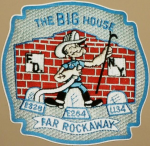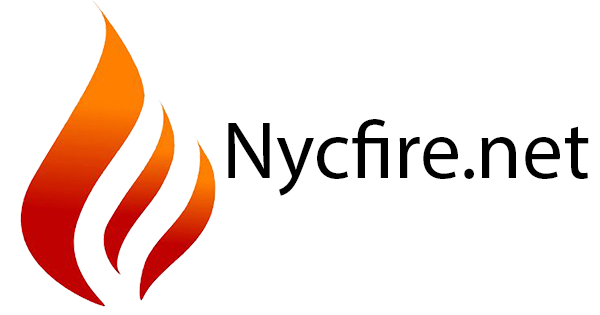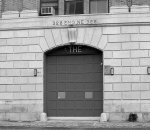Check out the history of "The Big House" in Far Rockaway -
(11) FDNY and NYC Firehouses and Fire Companies - 2nd Section | Page 49 | Nycfire.net
The question - "Why were there 2 engines in the same firehouse?" is best understood by the geography (most distant part of Rockaway), the rapid and dense build-up of the neighborhood in the early 1900s, Rockaway's summer tourist attractions and the history of serious fires in Rockaway.
1922


New York, June 15.--Fire swept through the seashore bungalow colony at Arverne, between Rockaway and Far Rockaway tonight and destroyed between 600 and 700 buildings. More than as core of colonists, overcome by smoke while fighting to save their effects, were rescued by firemen and policemen.
Fire Boats from New York. Fire boats, sent from New York, fought the fire from the bay.
Every structure in a five block area was destroyed. Eighty residences valued from $15,000 to $25,000 each, seventy-five bungalows valued at $5,000 each and fifteen hotels and boarding houses, valued at $40,000 to $50,000 each, were destroyed.
Seven engine companies, sent from New York, aided the volunteer fire fighting companies from Beach resorts. After three hours the blaze was reported under control.
An entire section of small bungalows was dynamited in attempt to arrest the flames and several firemen were hurt in this operation.
Many women and men overcome by smoke, were rescued by firemen and police and taken to the hospitals. Thirty firemen suffered burns and slight injuries.
The Bridgeport Telegram, Bridgeport, CT, 16 Jun 1922
Arverne, NY Fire, Jun 1922 | GenDisasters ... Genealogy in Tragedy, Disasters, Fires, Floods

 Arverne Conflagration
Arverne Conflagration
June 15, 1922, marked a busy and tragic day in the New York Fire Department. The action centered in the Rockaways, popular summering place of New Yorkers. It began with a fire that practically destroyed the home of Lillian Russell of stage fame, taking the lives of two firemen—one, Emmet F. Donnelly, Ladder 134, instantly killed by a falling chimney, and Adrien B. Curnan of Engine 26 who had volunteered his services while off duty, died later in a hospital. Several others were injured.
Later that afternoon, while operating at this fire in Far Rockaway, Battalion Chief William E. Lawrence was notified of a fire in the Arverne section which had gone out of control and for which three alarms already had been requested by Captain Harrigan of Eng. 266, which company had come from the next town of Holland to fill in for Eng. 265, out at the time of the blaze.
This fire had originated in the Hotel Nautilus, 100 Beach 60th Street, from a carelessly discarded cigarette. The culprit, a painter, delayed sending the alarm while he futilely tried to stop the blaze. The first box alarm was received at 5:15 P.M. from “signal station” 4962.
On his arrival, Captain Harrigan saw large 20-room houses on both sides of Beach 59th and 60th Streets burst into flames as flying embers from the Hotel Nautilus ignited cedar-shingled roofs dried from the sun’s rays. Without delay he ordered second, third and fourth alarm assignments.. Soon afterwards, Chief Lawrence tapped out a fifth and requested maximum pressure on the 16-in., 12-in. and 8-in. mains carrying the water supply of the Queens County Water Supply Company for the area.
At this point, although a fifth alarm had been transmitted a battalion chief still was in charge. Higher ranking chief officers, as well as the major alarm companies, all had to travel front the mainland to Rockaway, an isolated peninsula, a slow haul over the old Rockaway Boulevard and long and tortuous path through Far Rockaway and down to Arverne.
Engine Companies 267 and 266, with Ladder 121, first to arrive, were unable to reach the flaming hotel, in fact, were driven from their advanced positions under cover of a water curtain of Engine 265, which had just arrived. Men and apparatus of these units escaped safely but lost hose and hydrant connections to the onrushing lire. When Engine 265 attempted to follow, chased by the tornado of flame, their Christie Tractor failed and the engine was lost to the flames.
Twenty to thirty wooden buildings were being ignited as the air temperature rose to kindling point, and as the breeze carried heat horizontally over a wide area. Companies in its searing path were forced to retreat, in some cases leaving host to burn. Boats out in Jamaica Bay had to slip anchor to escape the heat.
Deputy Chief John O’Hara, in charge of Brooklyn and Queens, upon arrival immediately called for gasoline pumping engines from Brooklyn as it was obvious at this stage that the department was faced by a conflagration of major proportions. Motorization of the fire department at that time was not complete. Further, the pumpers of that era had not been designed for such long runs. Many broke down en route to the fire.
As the fire raged through hotels, boarding houses, bungalows and spacious homes, all efforts of the firefighters appeared futile to stop the spread. The situation was desperate as Assistant Chief of Department Joseph B. Martin and Deputy Chief John Davin arrived. The former, assuming command, quickly mapped his strategy, which was to fight the fire from both sides. Chief O’Hara was ordered to take charge of the east flank and Deputy Chief Davin the west flank. But it wasn’t so easy to mobilize the fire forces. Because of geographical difficulties, companies traveling from Brooklyn had perforce to approach the fire from the east side and to get to the west flank, they had to run the gauntlet of flame and heat at great risk. Engine 290 made the run through fire, with gasoline tank covered by a tarp’, the men shielding their faces and hands as best they could as they sped over the melting asphalt of Rockaway Boulevard.
Chief Martin called four fireboats, boat tender No. 13, and asked the aid of ten boats front the auxiliary fleet. Anticipating the danger of a shift of the wind, he asked government authorities at Governor’s Island for sappers and miners. The fireboat Mitchel was dispatched to transport men and explosives to Arverne, to be used in last ditch efforts to stop the advancing flames. The Long Island Railroad was also asked by Chief Martin to be ready to transport needed pumpers on flat cars.
The fireboats, unfortunately, were of little aid to the land forces, owing to shallow water. Meanwhile relaying was resorted to, to reduce friction losses. Batteries of strong streams were brought to bear on the flanks and companies deployed to encircle the vast ring of fire and move inward on the blaze. When, about 9:00 P.M. the Boulevard became passable, additional streams were available to stop the western advance of flame.
First relieving companies were able to return to quarters after fifteen hours of intense fire duty. It was June 17, 7:00 P.M., before the men assigned to watch lines got the final order to pick up.
It was found that the area burned measured about 1500 feet long and three blocks, or about 800 feet, wide. It contained 13 1/2 acres, with a total of 141 rooming houses, hotels and other structures. The estimated loss was $2,000,000.
This fire resulted in the enactment of legislation covering fire-resistive roofs, and establishment of an additional engine company in Far Rockawav. It also had a profound effect on the motorization of the department and its selection of automotive apparatus.
Historic New York Fires Have Influenced Fire Service - Fire Engineering
A year after this conflagration, Engine 264-2 was established in the same firehouse, renamed Engine 328 in 1939.








